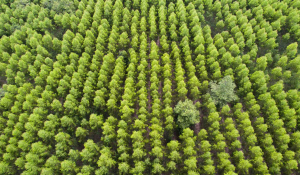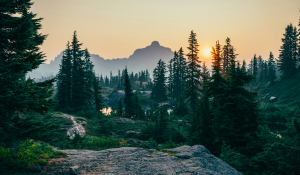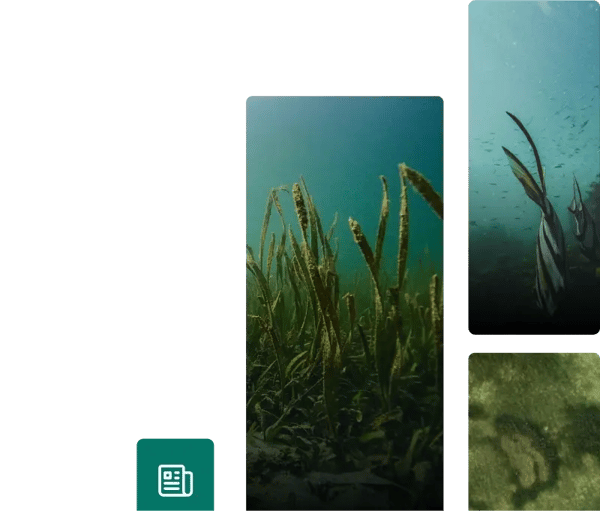REDD+ (Reducing Emissions from Deforestation and Forest Degradation) is an initiative developed under the United Nations Framework Convention on Climate Change (UNFCCC) to address deforestation and forest degradation.
The ‘+’ sign represents the inclusion of further measures taken like conservation, sustainable management of forests, and enhancement of forest carbon stocks to maximize impact. The REDD+ mechanism creates a financial value for the carbon stored in forests by incentivizing developing countries to reduce emissions from forested lands and invest in low-carbon paths to sustainable development.
Developing countries would receive results-based payments for results-based actions. REDD+ goes beyond simply deforestation and forest degradation and includes the role of conservation, sustainable management of forests, enhancement of forest carbon stocks, and local community benefits (UN-REDD, 2020).
Protect carbon sinks: the emergence of REDD+ projects
Beyond being a symbol, forests are, first and foremost, carbon sinks, as they allow massive sequestration of greenhouse gases. "Global forests play a major role in regulating the carbon cycle and atmospheric CO2 concentration. They contain "53% of the carbon accumulated in terrestrial ecosystems" (Boulier & Laurent, 2010). Their disappearance is detrimental.
These carbon sinks will decrease their carbon-sequestration potential, further aggravating pre-existing global warming and accentuating the destruction of ecosystems and biodiversity decline. In other words, the fight against global warming can only be achieved by protecting forests.
Where are REDD+ projects generally based?
Understanding the context in which REDD+ projects emerged is crucial. Historically, these projects have been predominantly located in the "Global South." This placement is linked to the historical role that Northern countries have played in anthropogenic emissions since the Industrial Revolution, making them largely responsible for the current climate situation.
The rapid economic development in Southern countries could significantly increase atmospheric carbon levels, adversely affecting the global community. To address this, the Voluntary Carbon Market and the creation of REDD+ projects emerged as solutions to finance Southern countries in preserving their carbon sinks, which are at risk due to economic growth.
While these projects primarily aim to protect existing carbon sinks, such as forests, they also encompass social and economic dimensions. REDD+ projects impact local communities positively, aligning with the United Nations' Sustainable Development Goals. Various standards are being developed to label and assess the positive impacts of these projects on local communities. Recognizing the heightened global and national awareness of the need for effective social and environmental safeguards (SES), the REDD+ SES initiative aims to define and support higher-level social and environmental performance for REDD+ programs (REDD+ SES, 2012).
Two types of REDD+ projects
There are two types of REDD+ projects, the ones avoiding unplanned deforestation (AUD) and the ones avoiding planned deforestation (APD).
- Avoided unplanned deforestation (AUD) projects: Aim to protect forests from highly localized agents, such as local communities growing crops for local consumption or deforestation due to illegal logging. An AUD project may involve funding local communities to improve farmland yields or increasing patrols to prevent illegal deforestation.
- Avoided planned deforestation (APD) projects: Aim to protect forests from secondary agents, such as large-scale, commercial agents of legally permitted deforestation for alternative use, such as for crop plantations or cattle ranches.
An APD project can prevent a forested area from being cleared by a corporation planning to convert it into a palm oil plantation.
REDD+ projects have high co-benefits on biodiversity and local communities
In addition to carbon avoidance, REDD+ projects have an important impact on biodiversity, by protecting endangered species.
REDD+ projects are essential in the fight against global warming and in protecting existing natural carbon sinks. At ClimateSeed, we are well aware of the potential to contribute to high-quality REDD+ projects that preserve ecosystems and endangered species, improve local populations' economic and social conditions, and store a large amount of carbon.
ClimateSeed's approach to REDD+ projects
Some REDD+ projects have faced controversies in the past, particularly regarding baseline calculations (especially AUD projects) and land tenure rights. At ClimateSeed, we carefully verify the quality of the baseline scenario (reference scenario) to ensure it does not overestimate deforestation risks to claim higher carbon savings. We also ensure that projects have clear land rights to prevent conflicts between local communities and project developers.
ClimateSeed integrates REDD+ projects into its portfolio by subjecting them to a rigorous three-level selection process:
Certification by major international standards
The first level requires projects to be certified by major international standards such as VCS or Gold Standard. These certifications ensure that projects accurately estimate and issue carbon credits for sale on the voluntary carbon market. They also evaluate the economic, social, and environmental co-benefits associated with each project. Additional certification from the CCBA provides a deeper analysis of the project's environmental impact on local ecosystems.
Due diligence
The second level involves KYC-AML due diligence (Know Your Customer and Anti-Money Laundering), a practice inherited from the banking sector. This step aims to thoroughly understand the project developer, local actors, actual beneficiaries, shareholder structure, and financial arrangements. The objective is to ensure that financial contributions obtained in exchange for credits are used for project development and not for terrorism or money laundering. This filter is crucial to avoid collaboration with fraudulent developers.
Internal project evaluation framework
The third level is ClimateSeed’s internal Project Evaluation Framework, which assesses and validates all projects added to its portfolio. Unlike rating agencies that score projects, this framework provides a robust assessment that highlights the benefits and drawbacks of each project.
This multi-step approach guarantees the high quality and relevance of the projects ClimateSeed works with, ensuring that REDD+ project developers have demonstrated their effectiveness.
ClimateSeed aims to achieve the best possible environmental, social, and economic impact. REDD+ projects, with their specific benefits and attractiveness, play a crucial role in fulfilling this mission.
Q&A
REDD+ projects offer significant environmental and social benefits. They reduce carbon emissions by preserving forests, which act as crucial carbon sinks, and protect biodiversity by ensuring the survival of various plant and animal species.
These projects also support local communities by improving economic conditions. For instance, ClimateSeed's forest conservation project in Guatemala, the world’s largest grouped forest-based carbon project, aims to restore forests and enhance local livelihoods. It helps individuals and communities obtain land titles, ensuring land security.
Moreover, REDD+ projects contribute to Sustainable Development Goals by promoting sustainable livelihoods. In Guatemala, local farmers receive technical assistance, agricultural inputs, and market access for sustainably produced commodities. The project also empowers women and girls by providing access to healthcare and education, collectively improving local economic conditions and community well-being.
- Abis, Sébastien. Brésil : où va la puissance agro-alimentaire avec Bolsonaro ? IRIS. Avril 2019. [Online] https://www.iris-france.org/135783-bresil-ou-va-la-puissance-agro-alimentaire-avec-bolsonaro/
- REDD+
- Boulier, Joël, et Laurent Simon. « Les forêts au secours de la planète : quel potentiel de stockage du carbone ? », L’Espace géographique, vol. tome 39, no. 4, 2010, pp. 309-324.
- Brimont, Laura. REDD+ project performance: predicting the worst and promising the best? IDDRI. 2016. [Online] https://www.iddri.org/en/publications-and-events/blog-post/redd-project-performance-predicting-worst-and-promising-best
- REDD+ SES. Standards Sociaux et Environnementaux REDD+. Version 2. 2012.
- UN-REDD Programme. Our Work. 2020. [Online] https://www.un-redd.org/document-library/annual-report-2020
- Wunder Sven, Duchelle Amy E., Sassi Claudio de, Sills Erin O., Simonet Gabriela, Sunderlin William D. REDD+ in Theory and Practice: How Lessons From Local Projects Can Inform Jurisdictional Approaches. Frontiers in Forests and Global Change. Volume 3. 2020.
Share this
You May Also Like
These Related Stories

Mexico Visit: 3 Ecosystems, 12 Communities & 10 Days

The difference between carbon removal & carbon avoidance projects


